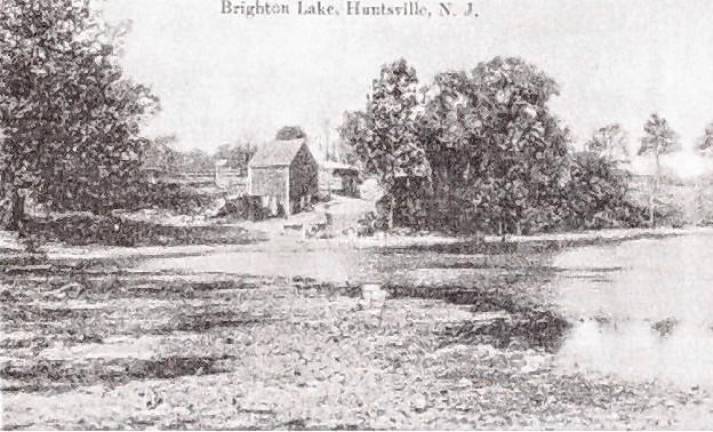
Today I am pleased to have a guest columnist, Rich Vohden, who is an expert historian on Green Township and the southern part of our county and is one of the leading historians of Sussex County.
Once upon a time, there was a lake there. Actually, it was called Brighton Pond.
It was created as a millpond behind an earthen dam that is 160 feet long, 15 feet wide, and 8 to 10 feet high.
The dam is still there. It has been breached but is still intact otherwise, and the Pequest River still runs through the mill race that has walls on either side that were built with large local limestone blocks.
The water running through the millrace originally provided power for the Huntsville log sawmill, gristmill and forge built by Thomas Wolverton.
Wolverton came from Hunterdon County in 1750 and purchased land from Samuel Green.
He selected 91 acres at the location on the Pequest River where the land is high enough on both sides of the river to provide a suitable location for the dam and millpond.
After a few years, Wolverton sold the property, and after several owners, it was purchased by Joseph Gaston, who built the four-story gristmill. This mill operated throughout the 19th century with water power supplied from Brighton Lake.
There is a chart (available on request) that is from a book published by the state geologist in 1891, showing that the fall of water was 10 to 12 feet and that the sawmill utilized 21 horsepower and the gristmill utilized 42 horsepower supplied by the waters of Brighton Lake.
Bill Morris, who lived his entire life on this property, and his father, Harvey, removed the top two stories of the four-story grist mill in 1925.
Bill was 13 years old at the time, and he accidentally cut off the first digit of his left index finger with an axe.
He told me several times that his mother kept that finger in a bottle of alcohol for a time.
The mill was demolished about 1942. The large stone grinding wheel was buried on the property, and a school bus garage was built on the site.
Brighton Lake was fed by two sources. The first: Pequest Creek drains from Whittingham Wildlife Area, Muckshaw Ponds preserve and Stickle Pond. The other: Kymer Brook drains from Lakes Lenape, Aeroflex and Iliff and Gardeners Pond, White Pond and Twin Lakes.
These two tributary streams come together to form the Pequest River at the upstream end of Brighton Lake.
It was because of Brighton Lake and the waterpower it provided that Huntsville was once a leading industrial, cultural and shopping center for this area.
Huntsville at one time had a gristmill, a sawmill, a wheelwright shop, an icehouse, a limekiln, two blacksmith shops, a post office, a school and six stores, two being the best general stores in the county.
Most of these buildings are gone and the village would be unrecognizable to earlier residents. The lake could not have been seen from Huntsville.
A great view would have been from the high ground at the location of the home that is now Crossed Keys, with Turtle Pond on one side of the road and the lake on the other. At that time, there were few trees to block the scene.
It would have been seen from the present-day Cahill farmhouse and also looking downstream from the Brighton Creamery building around the corner from Cahill’s on Brighton Road and Kymer Brook, now a residence.
Brighton Lake today has returned to its natural state; wetlands and woodland. It probably looks now much as it did when the first settlers came to Green Township. The only things missing are the Indian campsites that were located on the banks of the rivers in this area.
Bill Truran, Sussex County’s historian, may be contacted at billt1425@gmail.com